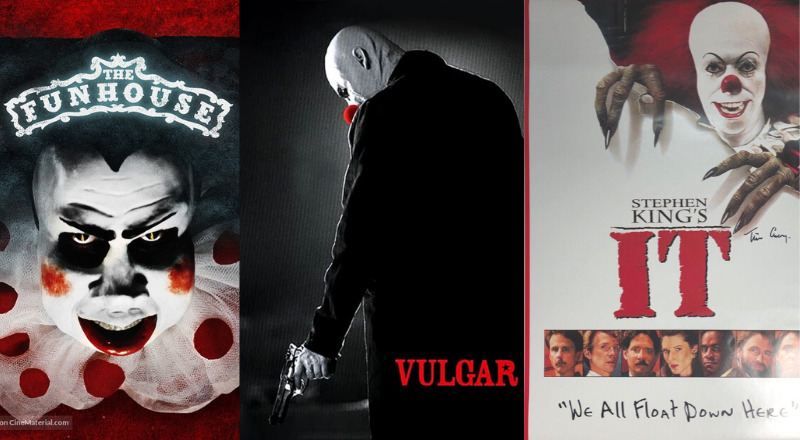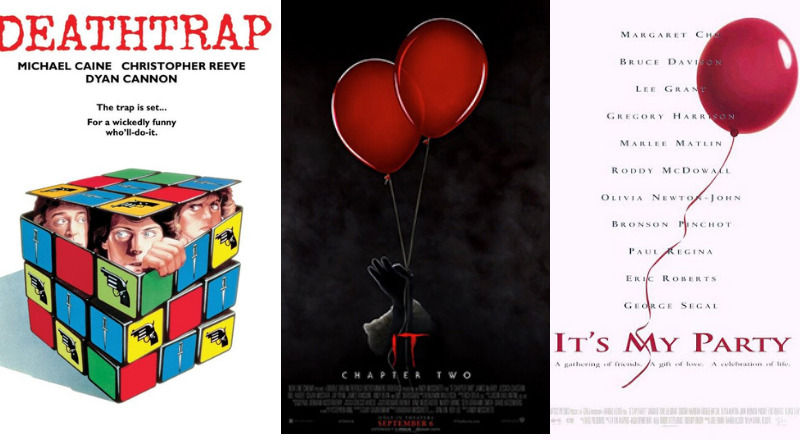Gays, Panic: John Wayne Gacy, Killer Clowns, and “Representation”
When It Chapter Two hit theaters a little over a year ago, Facebook’s queer horror groups were all aflutter with hopes of representation or the fretful sighs of feared pandering. All of the excitement came from an opening scene of gay bashing, a scene based on the real-life murder of Charlie Howard in Bangor, ME and which appeared in Stephen King’s original novel. King, who was living and writing the novel in Bangor at the time of the murder, said that it fit the novel because Derry is a “place where terrible things happen.”
The debate over if “terrible things” happening to queer folks qualifies as meaningful representation in popular media will undoubtedly continue. Every queer who remembers late-80s/early-90s gay and lesbian film work knows the “bury your gays” trope all too well (see It’s My Party, Rent, Edward II, Cursing, Deathtrap, and even Pedro from The Real World: Los Angeles for examples). Regardless of anyone’s feelings on the dramatization of Charlie Howard’s murder in the second installment of It, there has always been a dual queer narrative: the helpless (gay-coded) boy and the preying older pedophile.
As noted elsewhere, particularly Screen Rant’s very accessible and thorough reading of Pennywise, King drew three powerful ideas together for one terrifying monster: the trustworthy image of Ronald McDonald, the serial killer John Wayne Gacy, and the ever-present 80’s “stranger danger” panic. Gacy, the ultimate boy-killer who racked up a whopping 33 kills, must be read as the primary source: both hunt in cycles, both prey on children, and both bring the bodies of their victims underground (into the sewers or, to quote Sufjan Stevens “underneath the floorboards”). Pennywise is distilled fear that conflates sex and death, McDonalds and disappearance.
Queer educator and activists, Eric Rofes, wrote that when queers are presented in public they are always martyrs, targets, or victims. Adrian, the Charlie Howard stand-in of It Chapter Two, indeed fits Rofes assertion. Gender theorist and all-around rocker, Julia Serrano, speaks of transwomen’s representation as always being either deceptive or pathetic. Her theory goes beyond trans representation and into all queer representation. As a “martyr” and “victim” Adrian is “pathetic” and plucks at our queer heartstrings. Pennywise, Adrian’s queer counterpoint, is “deceptive,” luring his victims down to see the balloons and dead-lights.
Director Andy Muschietti told TIME Magazine that, “Even though IT looks like it’s a movie about a clown from outer space, it’s a movie about how fucked-up humans are.” I have to agree, but I must also note that the director’s comments suggest reading Pennywise not as an outsider/alien but as an insider — he is the oldest neighbor on the block, the friendly one who no one can remember when he was not being there. Muschietti was surely talking about Adrian’s murder, but in reality, whether intentionally or unintentionally, he points a finger at the “fucked-up” audience who wants to watch, asking a litany of questions: Why do we want to “bury our gays”? Why do we need to make them saints or demons in that death? How do we respond to difference? What level of difference do we accept? What level of difference gets punished, and how?
If you want to explore the world of questions evil clowns raise, check out these gems:
- Gacy (2003) — Highlights: Sexy bear Mark Holland in the title role and the charming smile of otter, Charlie Weber.
- It (1990) — Highlights: Tim Curry chewing the scenery! Look up his onset antics and contract rules for extra fun!
- Vulgar (2000) — Highlights: Kevin Smith plays gay! The shock value is high. It feels unnervingly real.
- Killer Clowns from Outer Space (1988) — Highlights: It’s funny. I’m convinced there is a much deeper commentary at play, but I can’t tell what! You, however, should tell the comments!
- The Funhouse (1981) — Highlights: Tobe Hooper is actually a good director! This film isn’t original, and it’s often copied, but it is the best version of the amusement park slasher. See Funland (1987) for a different, grittier take.

If you are in pedophile panic searching for the basement of a DC pizzeria, try these truly startling looks at the topic:
- Hard Candy (2005) — Scare Factor: You realize what you would do in her shoes!
- The Lovely Bones (2009) — Scare Factor: Everything! The trunk! The little houses! The pit!
- Running Scared (2006) — Scare Factor: The DVD collection and the wife!
- Deliver Us from Evil (2006) — Scare Factor: It’s a documentary!
- Prisoners (2013) — Scare Factor: The creepy RV, but most of all, the waiting!
If you can’t handle this week’s scares, check out Sufjan Stevens’ song about the originator of these fears, “John Wayne Gacy, Jr.” These lines get me every time: “He dressed up like a clown for them / With his face paint white and red / And on his best behavior / In a dark room on the bed he kissed them all.”






